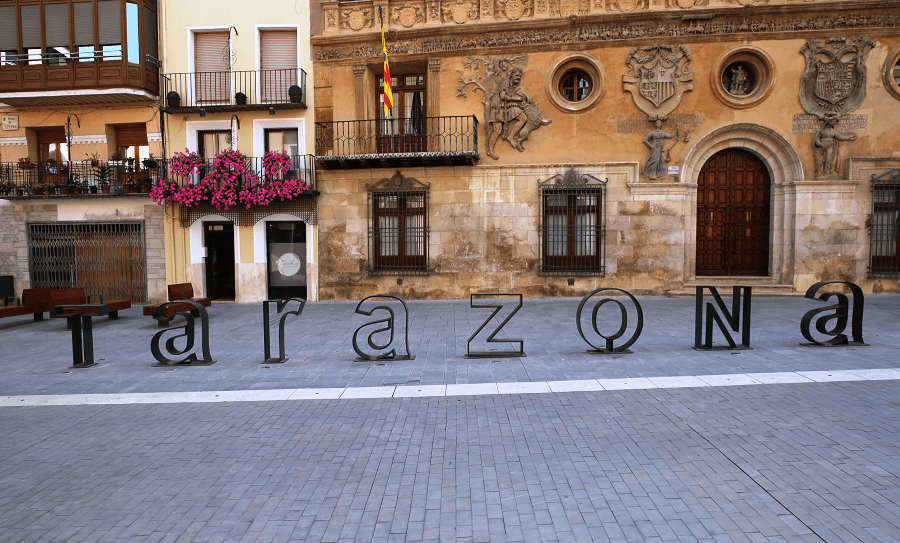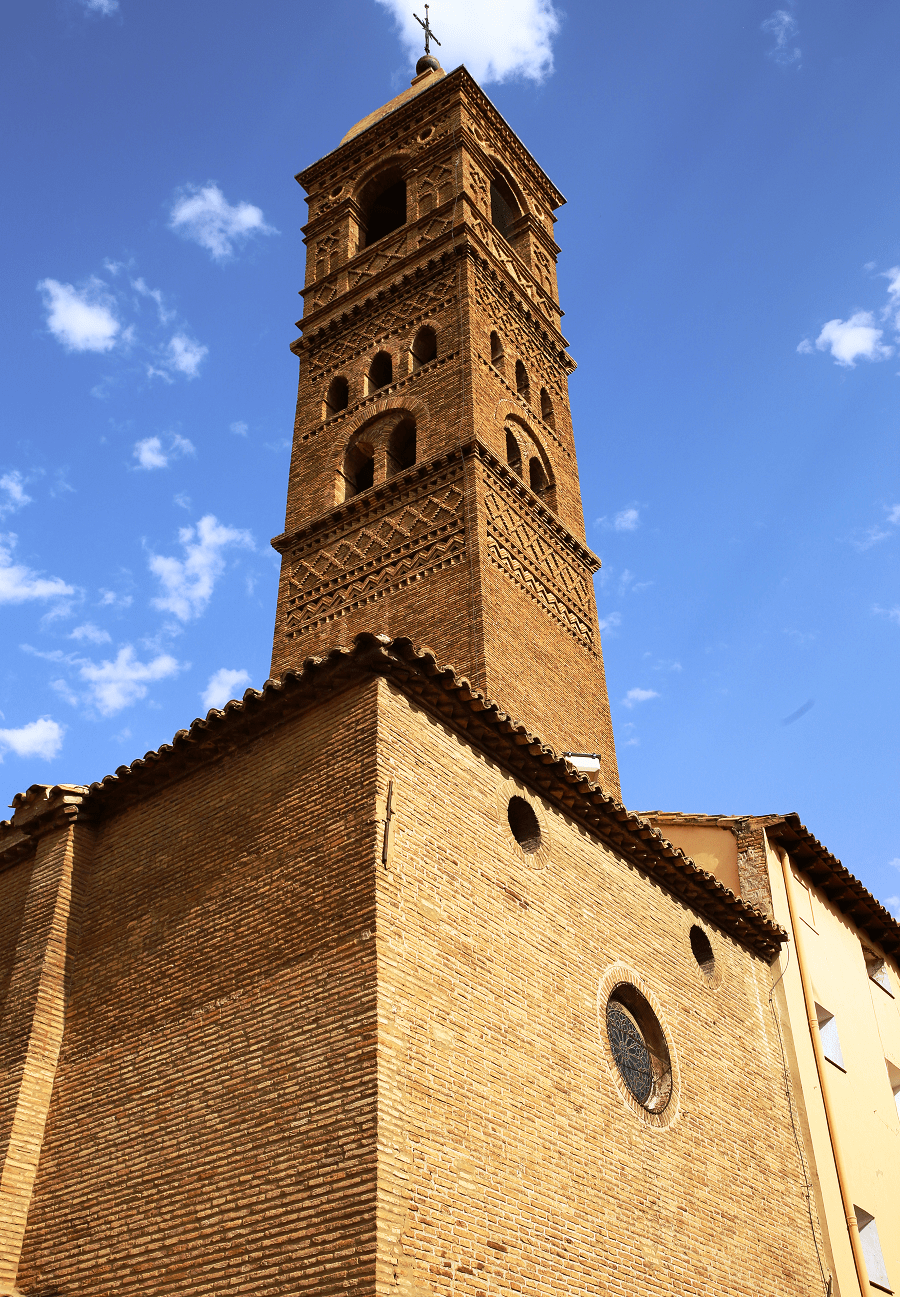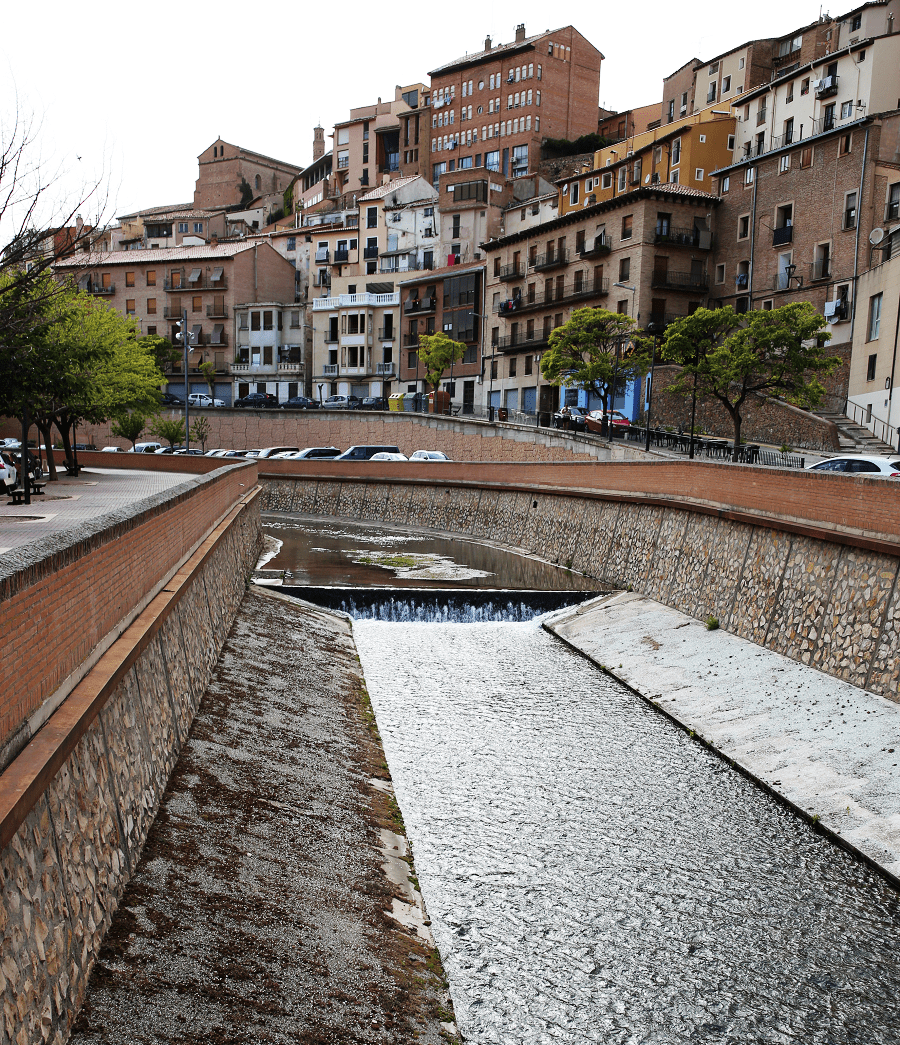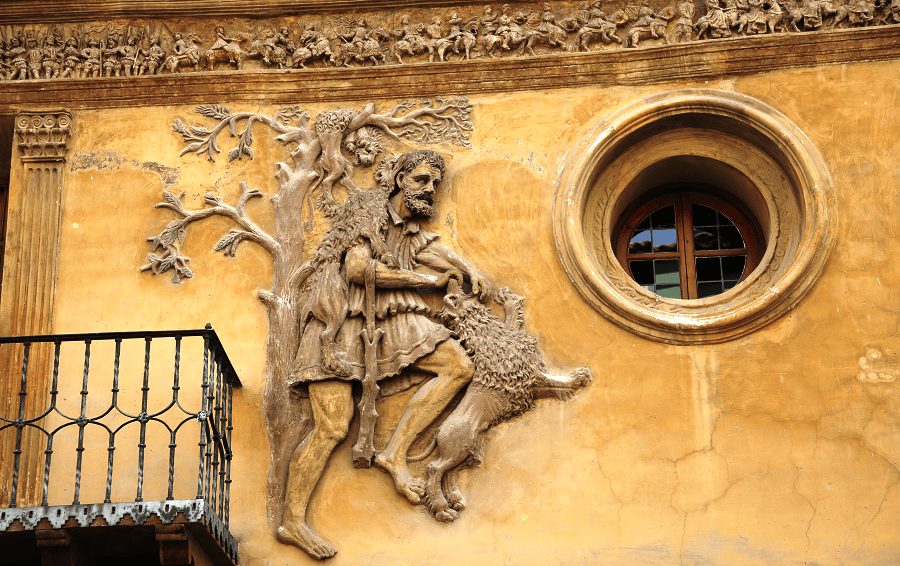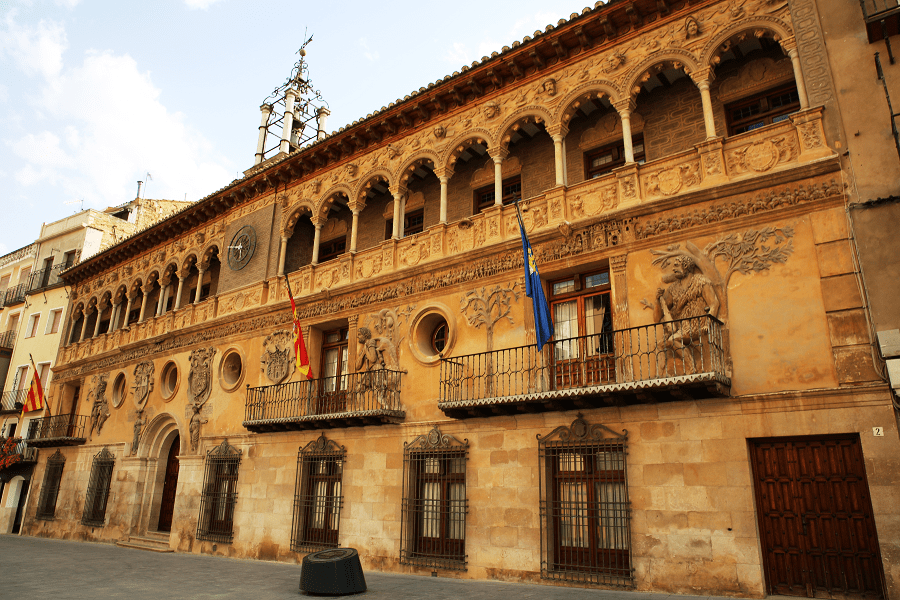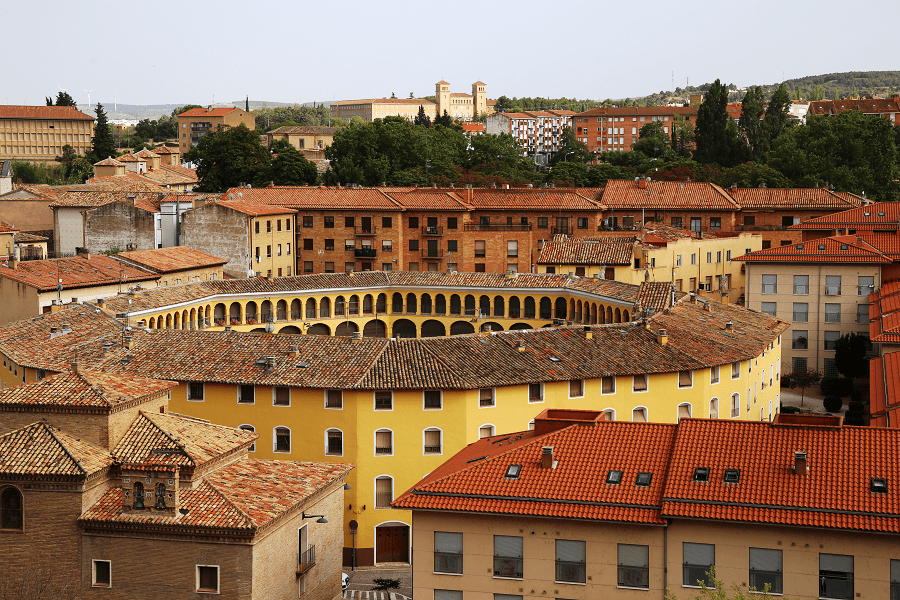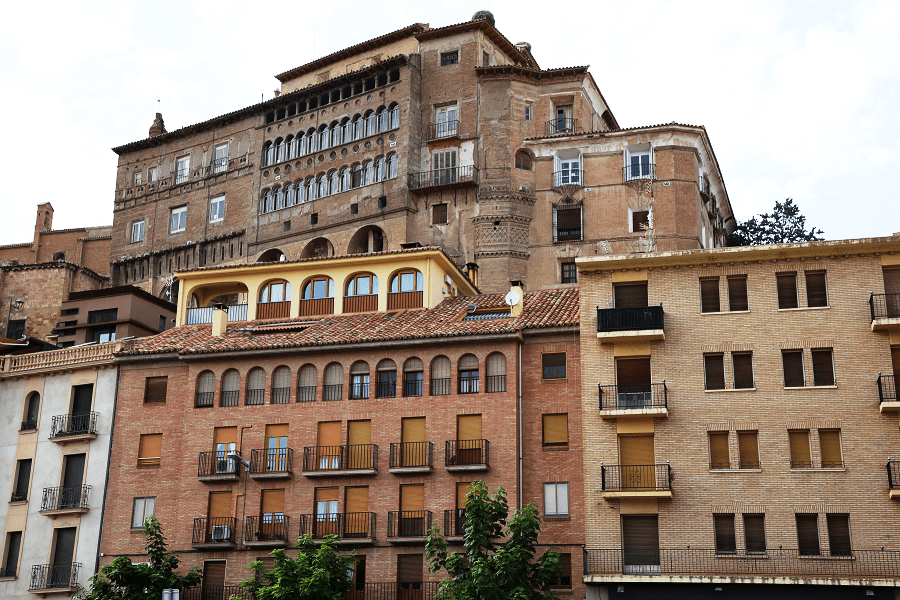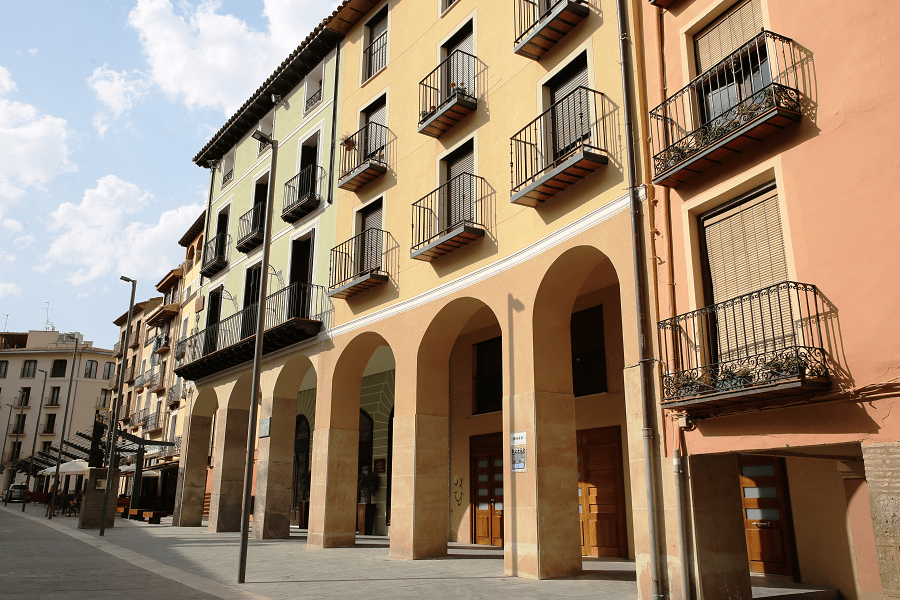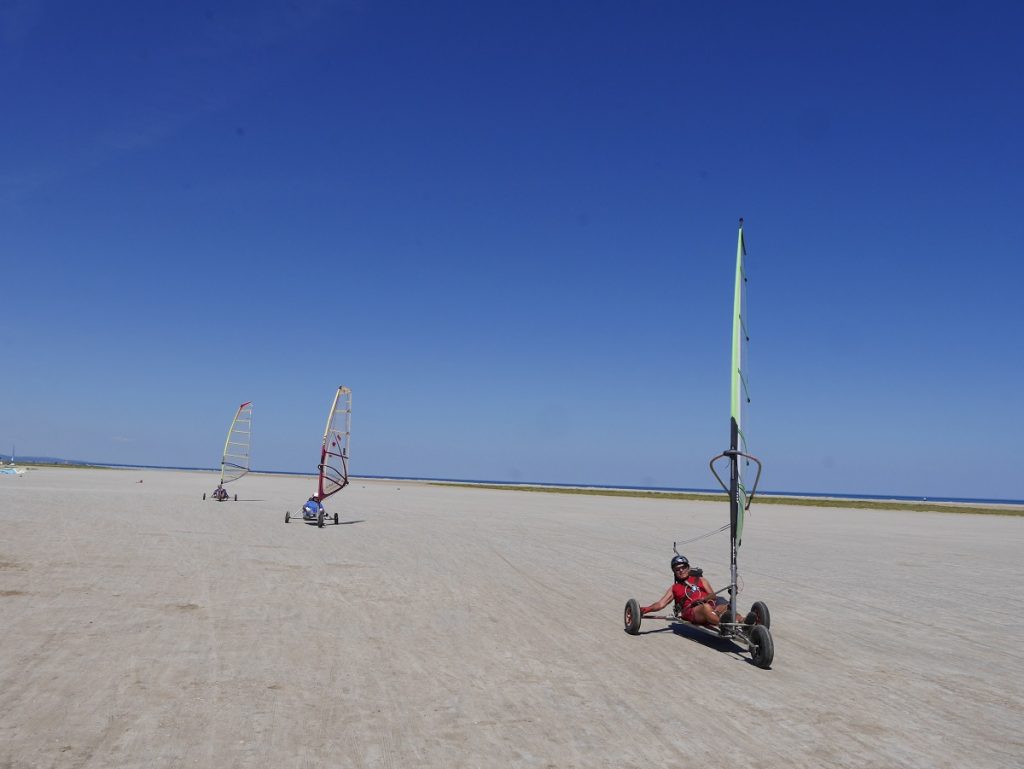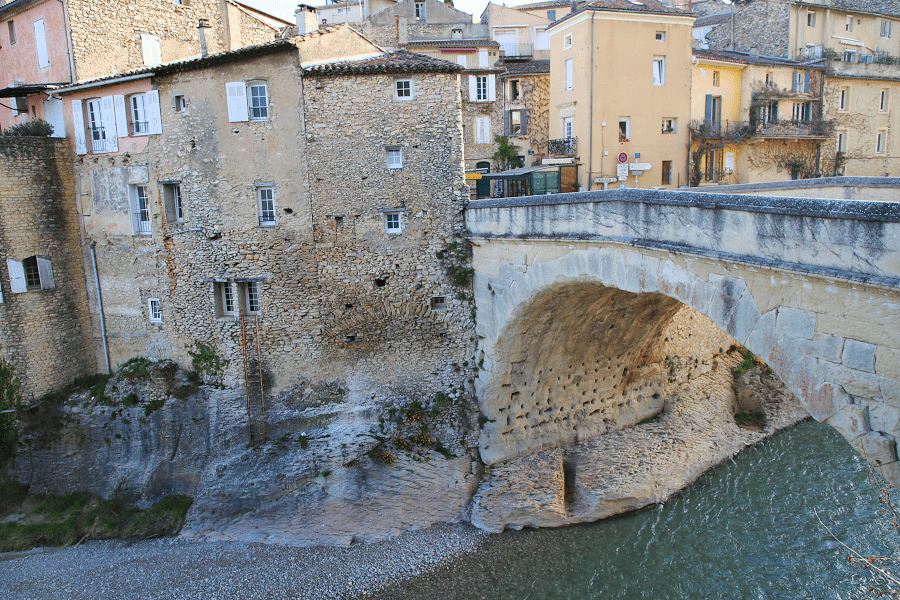Tarazona is a town and municipality in the Tarazona y el Moncayo comarca, province of Zaragoza, in Aragon, Spain. It is also the seat of the Roman Catholic Diocese of Tarazona.
It occupies a geographical space that has historically been the border between the kingdoms of Castile, Navarre and Aragon. This uniqueness, together with the fact that the region is a natural passage between the North Plateau and the middle valley of the Ebro river, have given Tarazona a strategic character for centuries.
The city became in the Middle Ages an enclave of reference for commercial, diplomatic, military and religious relations – the Diocese was made up of territories from three different kingdoms. However, the progressive unification of the Crowns of Castile and Aragon was devaluing this strategic value. Until then, Tarazona witnessed royal weddings, pacts, wars and celebrations of the Cortes.
The pre-Roman foundation of the city —as well as its early designation as an episcopal seat— have gradually shaped the old town as a monumental space with great historical-artistic value. The peaceful coexistence for centuries of Christian, Jewish and Muslim communities has further enriched the urban complex. The local heritage spans from the 1st century BC. Until the 20th century Tarazona had had a long industrial tradition.
Tourism and main attractions
The old town of Tarazona was declared a Historic-Artistic Site in 1965. It is made up of a large number of narrow, cobbled streets without much order. After his visits to the city, the poet Gustavo Adolfo Bécquer called it the little Aragonese Toledo.
The Cathedral of Nuestra Señora de la Huerta, with a Gothic floor plan, is one of the first cathedrals built in this style in Spain and is the best example of Gothic architecture in Aragon. Despite this, its appearance has varied greatly since then as it has incorporated different styles, resulting in a rich monumental ensemble.
Episcopal palace. This spectacular Renaissance palace, built on conglomerates that rise high above the Queiles, was originally the ancient Muslim zuda. A military building in which the Muslim governors resided and later, after the reconquest, used as a residence for the kings of Aragon. In 1386 it was bought by Bishop Pérez Calvillo. A profound transformation of the building began here, which did not end until the episcopate of González de Munébrega (1547-1567).
Church of Santa María Magdalena, in the Cinto neighborhood, is characterized by its slender tower in the Romanesque-Mudejar style. It is the oldest preserved temple in the city, since its ashlar chevet with three apses, in a late-Romanesque style, dates from the end of the 12th century. Its tower constitutes the main visual reference of the old town.
Church of San Miguel, originally as a Christian temple in the 13th century and rebuilt in the 16th. The Renaissance altarpiece painted by Pietro Morone stands out.
Tórtoles Mosque. Dating from the 15th century, it is one of the few Aragonese mosques built under Christian rule and that has survived to the present. Inside you can see the Muslim mihrab, a colorful Mudejar ceiling with Arabic inscriptions and wall paintings corresponding to the conversion into a Christian church in 1526.
Town Hall of Tarazona, built between 1557 and 1563 in the Plaza Mayor or the Market to fulfill the function of Lonja. It was only in the middle of the 17th century that the building began to be used as a proper town hall. Its façade has a Renaissance façade that contains the figures of Hercules —mythical founder of the city.
Hanging houses. They are a group of houses that was built taking advantage of the walkway of the wall of the Cinto neighborhood. While the access to the houses is in the Calle del Conde, their rear facades are flown over the Jewish quarter. These houses belonged to the lower nobility such as López de Gurrea, Señores de Torrellas, Los Fayos.
Ramparts. At different points in the Cinto neighborhood – a neighborhood “curbed” by the wall – you can still see different lines of the wall, sometimes integrated into private homes. The most outstanding paintings can be seen on Calle Alfara, Mayor and Plaza del Puerto. In the Calle del Conde and in the Plaza de la Laguna there are still access doors and towers. In the west wall there were in the past two pools of water to improve the defense capacity of this area.
Eguarás Palace, a 16th century Renaissance palace, residence of the Marquis of Eguarás, which stands out for its size, patio, botanical garden and for the deteriorated paintings by Pietro Morone. Located next to the Cathedral, it is owned by the Zaragoza Provincial Council.
Fine Arts Theater. Completed in 1921, it is an example of eclectic architecture, with modernist reminiscences on the outside and classicist elements on the inside. With capacity for 475 people.
Old bullring, built with an octagonal plan between 1790 and 1792 in the old meadow of the city. It was a building of 32 houses whose owners rented the balconies when there were festivities. Today it is still inhabited.
Restaurants
There is one Michelin list restaurant in the city:
Saboya 21, Marrodán 34-1º, 18 – 55 EUR • Traditional Cuisine
How to get to?
From Zaragoza 1 hr 2 min (86.7 km) via AP-68 and N-122
From Madrid 3 hr 3 min (292 km) via A-2
Main information
Area: 244 sq. km
GPS coordinates: 41°54′16″N 1°43′21″W
Language: Spanish
Population: 10558
Currency: Euro
Visa: Schengen
Time: Central European UTC +1, in summer +2



